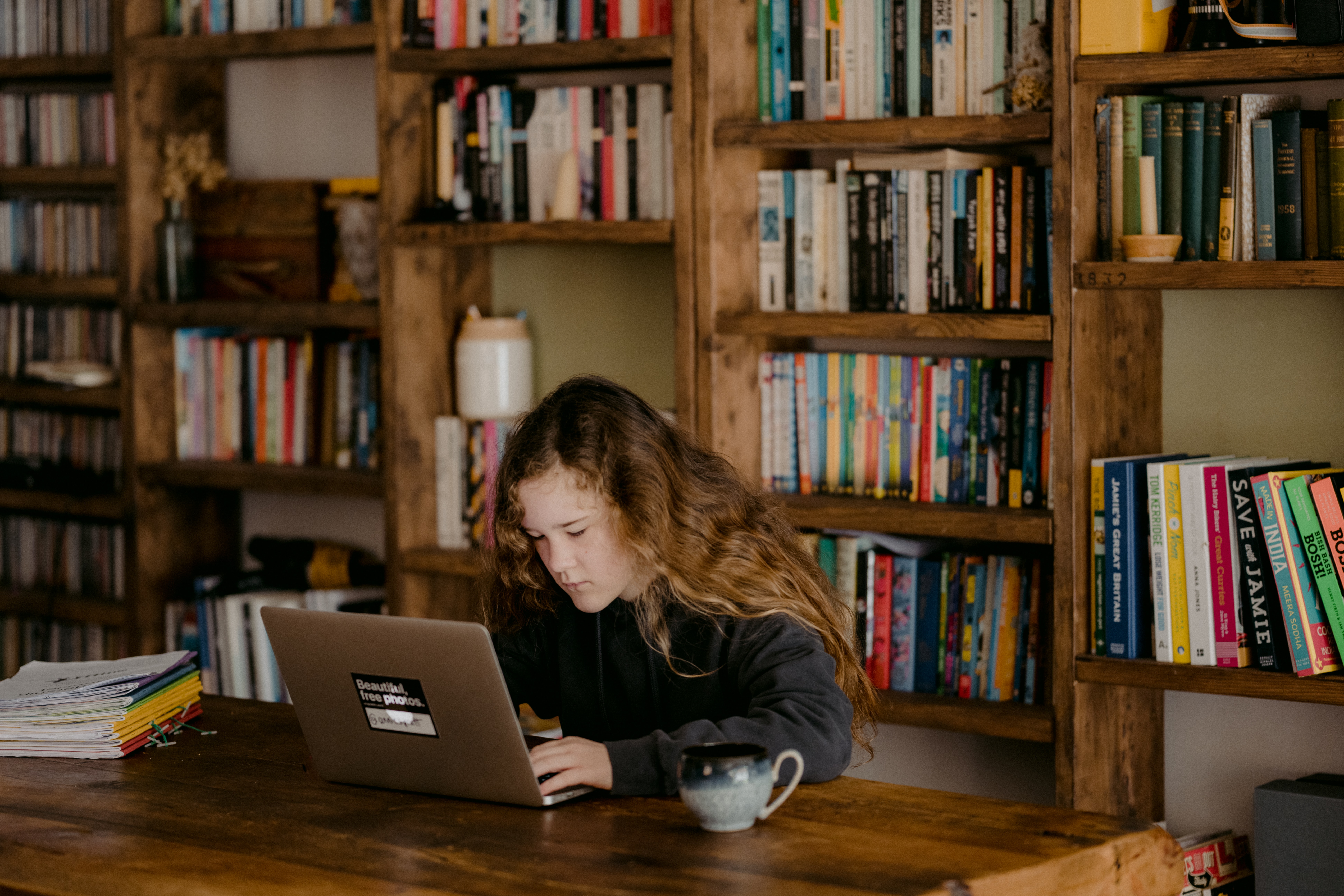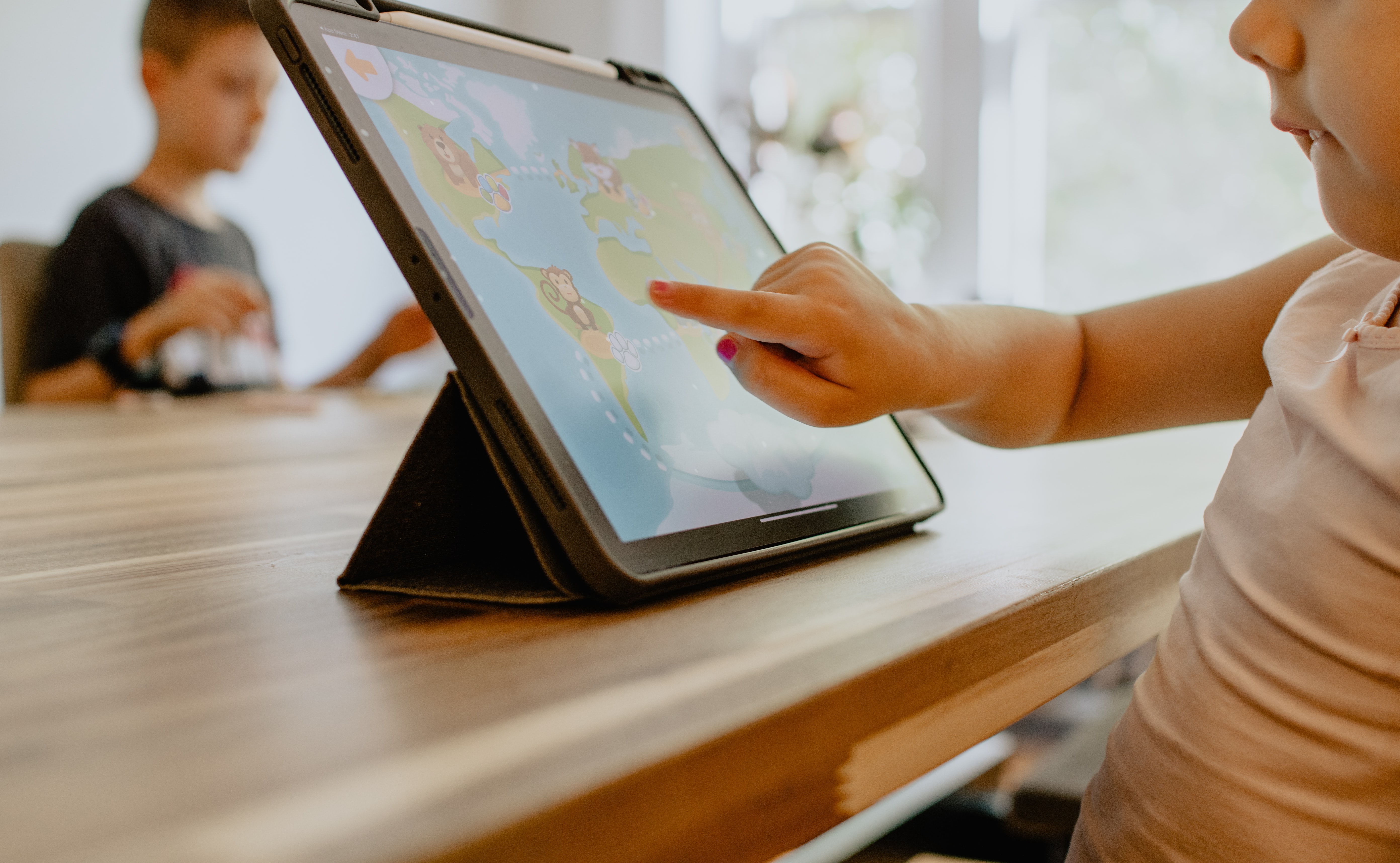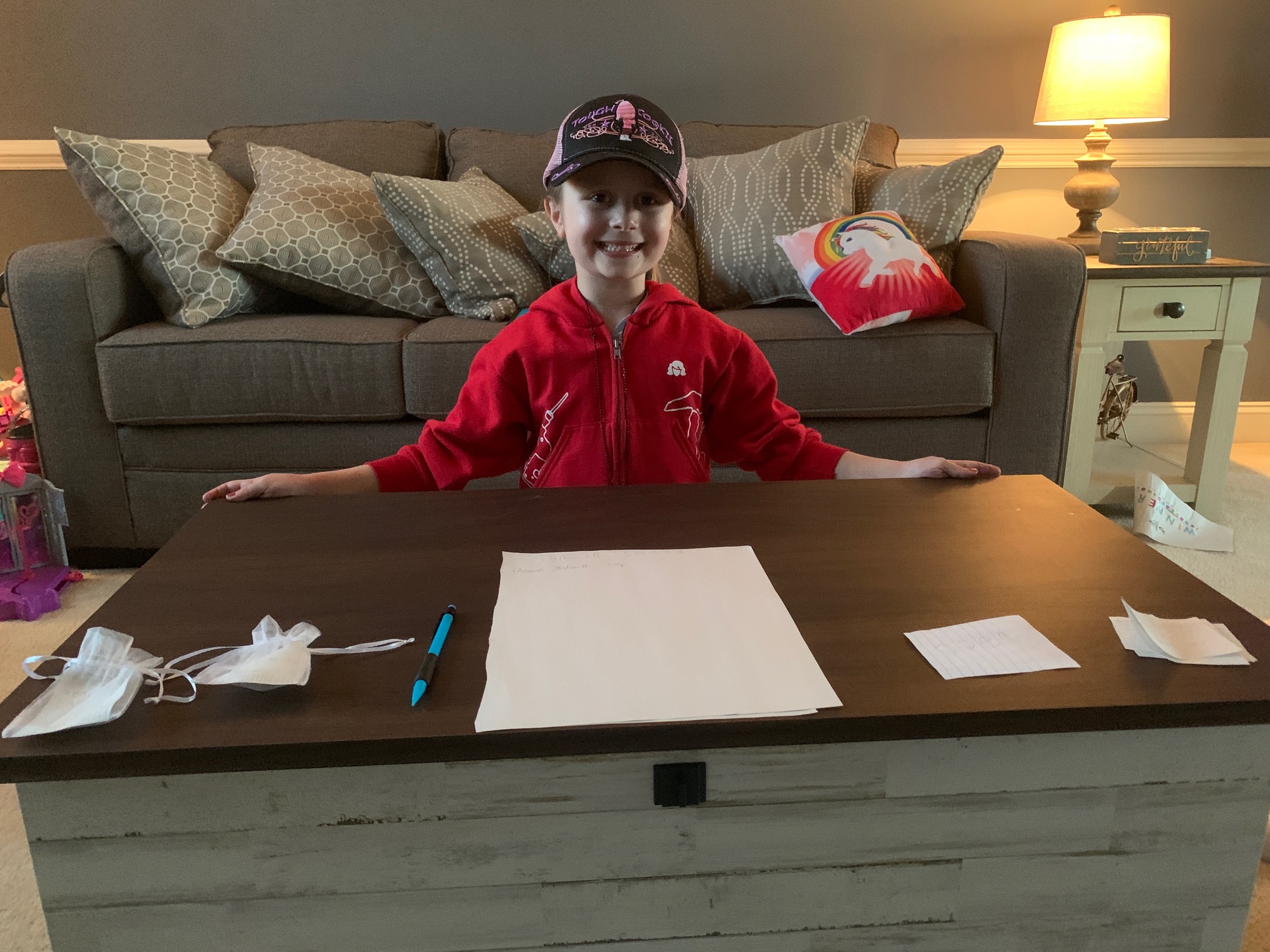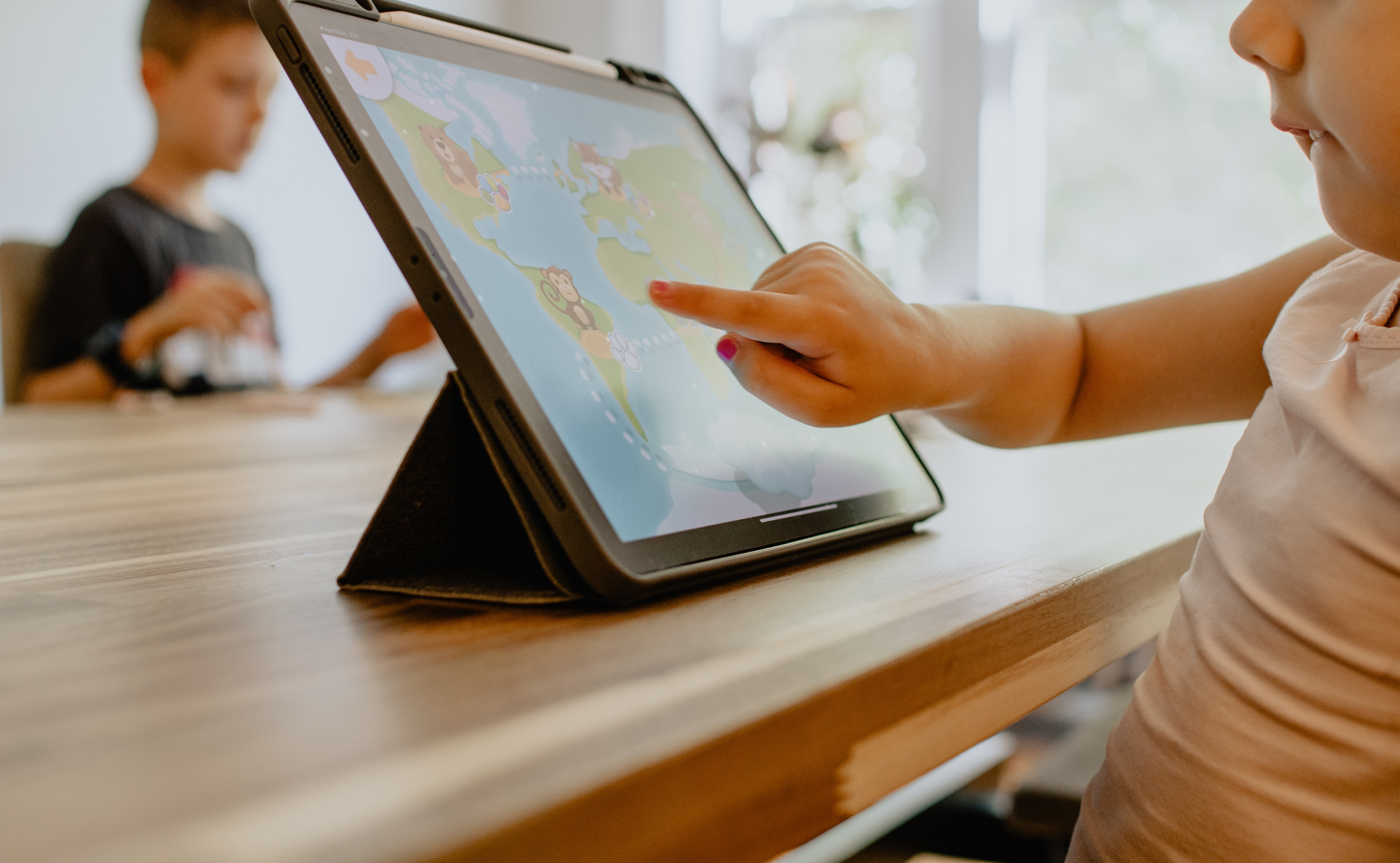As a busy working mom, I am exhausted. I 100% support my daughters’ school, but the constant changes to our daily and weekly schedules, particularly over the last month, have made it extremely tough to get into a rhythm.
So, I reached out to two female heads of schools, both working moms, for their best tips to help my family learn to go with the flow (okay, let’s be honest: to help ME be more accommodating and flexible).
Betty Norton, head of school for Xceed Anywhere, a virtual middle and high school and Tracy Smith, head of school for Xceed Preparatory Academy – Coral Springs (FL) have worked in public schools, private schools and virtual schools, and, like every other educator in the country, have had to navigate through the pandemic not only personally, but professionally.
Determine YOUR New Normal
“I think this quote from Kristen Armstrong, a professional athlete, sums it up,” said Smith, mom to 14-, 12- and 10-year-olds, and an 18-year education veteran. “She is quoted as saying, ‘Times of transition are strenuous, but I love them. They are an opportunity to purge, rethink priorities and be intentional about new habits. We can make our new normal any way we want.’”
“I know that transitions can be challenging,” Smith continued. “But you can do it! Unlike most transitions in your life, right now, we are all going through this challenging time together. Build new habits, reinvent yourself, create your new normal. You’ve got this.”
Tips to Help Transition From Face-to-Face to Remote Learning
“There are differences between virtual learning and remote learning,” said Norton, an educator with 25 years of experience in both physical and virtual classrooms, as well as school administration. “Remote learning is designed to mimic the traditional classroom setting and schedule as much as possible, whereas virtual learning, like what we have at Xceed Anywhere, consists of a more flexible schedule.”
“That being said,” continued Norton, “there are some tips we use with our families who are new to virtual learning that can easily apply to those who are now learning remotely. What’s important to remember is that routines take time. If something is not working after two days, don’t give up on it so quickly, as a new routine could take up to two to three weeks to get used to. By giving yourself that space to make it work, it will reduce your stress considerably.”
Speaking from experience, that time frame aligns with what my family experienced when our district went fully remote. The first week was extremely difficult, but by the third week, we were in a groove.
Be kind to yourself and your family
Any other planners out there who have been completely knocked out of their comfort zone during this pandemic? We are often our own worst critic, expecting perfection and seamlessness every day.
“That’s a standard that is not sustainable,” said Smith. “Be kind to yourself by re-evaluating what is attainable, what is working and what needs to be adjusted along the way.”
Get dressed for the day
When I started primarily working from home two years ago, I was SO excited to ditch my suits for yoga pants. However, in this era of never-ending video calls, I decided to get dressed, albeit not as formally, just in case I had to hop on Zoom or Google Meet. I quickly fell into a routine that made me feel more prepared for the day.
“The act of getting ready triggers your brain into action and you will start your day productively,” Smith said. “It shows your children to take the situation seriously and they should be getting ready for school too. Students should not be eating in front of the webcam in pajamas. Students should build in time for the morning to get dressed, eat and be school-ready on time as if they were going to school. Kids can be in a more relaxed setting, but still ready to go so their brains know they are ready to learn for the day. Teachers will appreciate the respectful appearance and students will get into a routine.”
Set up your work area for success
“Secure a learning space that is quiet and distraction-free where students can meet with teachers and will be able to focus,” advised Norton, mom to a 20-year-old college student and a nine-year-old. “Having the family pet in the same room, a younger sibling napping in the room next to them or parents in the background conducting work calls are all potential distractions for students.”

“A student’s workspace should be quiet and everything they need should be readily available,” continued Norton. “The space does not have to be elaborate: a small table, a comfortable chair and items like a charger, pens and pencils, scratch paper, notebook and highlighters should all be at arm’s length. Maybe even put a motivational quote up on the wall as a reminder that you’ve got this!”
Limit digital and environmental distractions
“It’s tempting for teens to play a game or text friends while they should be focusing on an online class or assignment,” Norton said. “To help avoid this, have them put their phone on ‘Do Not Disturb’ and put it away.”
“Also, students should avoid opening tabs online that aren’t school-related,” continued Norton. “It’s far too easy for that five-minute internet browsing break to turn into 45 minutes of wasted time. There are online tools parents can use to block certain websites, at no expense, for the hours their children should be working on school assignments.”
Schedule breaks, meals and appointments
“If I don’t have it on my calendar, it does not happen,” said Smith.
She recommends adding breaks, class changes and mealtimes to your child’s digital calendar or school/district Google calendar. “My family created a shared Gmail account we use only for school and family appointments,” Smith said. “The kids have access to it, and we all know what is going on when.”
Norton agreed, “Use your phone, Alexa or Google Nest to create routines for little ones (many have a kid app feature). You can even have your child pick a different tone or music to signal different things such as time to return to class or snack break.”

Smith also shared that as soon as an assignment is put out by the teacher, they add it to the calendar with the child’s initial first (i.e. Z-History 11.1, G- Math Quiz, All Kids-Virtual Band Practice). “Middle school students should begin putting events on the calendar themselves (with parents supervising) to help develop time management skills,” suggested Smith. “I have my children place long-term projects on the calendar with the due date and then back up a week before it is due.”
Balance breaks with learning
This is applicable to not only your child(ren), but also you, particularly if you’re new to the working-from-home scene.
“It’s okay to take a break during the school or workday,” said Norton. “In fact, it is imperative not only for your mental health, but also for your physical and emotional well-being.”
Smith added, “Students need breaks to walk away from the computer, stretch their legs, get a snack, snuggle their pets or even just get a quick hug in.”
Keep the lines of communication open
If you’re a student and you didn’t get the grade you thought you would on a test or assignment, Smith recommends taking a deep breath before reaching out to your teacher. Ask how you can improve the next time and, if you’re struggling with the technology or learning environment, speak up.
If you are the parent of a younger student and you’re at a loss for how to supplement science lessons or reading exercises, Smith encourages you to reach out to your child’s teacher and to even check out various parenting and learning blogs. “There are extensive resources out there—for free—and don’t be afraid to put a question out to the masses. I guarantee that if you have a question, so do dozens or even hundreds of other parents.”

“Students learn differently,” added Norton. “There are multiple resources that can help them see/hear/apply the content from a different perspective, so don’t be afraid to ask for advice or help from the teacher. Become an ally in your child’s learning and support by implementing strategies the teacher uses in other ways, so they see the value in what they are learning.”
“In many cases, remote or virtual learning is new to families,” continued Smith. “You might need to approach it differently and that’s okay.”
Norton also noted that parents should check in with their children on a regular basis to ask what they’re learning, encouraging them teach their family about something new. “When children are learning from home, families have a unique opportunity to see them in action,” said Norton.
“You get a front-row seat and can better understand what they are interested in or even passionate about in school.”
Norton further recommends keeping messages with your child’s teachers and school in one channel, if possible. “Many teachers are using Remind or Class Dojo,” said Norton. “Whatever method the teacher is using to communicate to you, also use it to reach out to them so your primary communication is all in one place.”
Save resources and login information
Bookmarking resources on your child’s device can help them not only access what they need quickly but can also save you from getting frustrated.
Personally, I struggle with trying to get my five-year-old into a Google Meet at times that don’t typically work for my meeting schedule, such as 10:20am or 1:35pm. Because she can’t quite read yet, I’ve found that saving the login and password information on our personal device, combined with a timer, can help her (sometimes) get into class when I can’t be there. Norton recommends that older students take responsibility for their resources and personal information.
“Students in 4th grade and up are capable of using computer-based systems such as Password Keeper, Keychain on Mac or LastPass for older, high school-aged students,” said Norton. “All are free and at your fingertips to use no matter where you decide to work from.”
Change the scenery
Speaking of mobility, Smith and Norton both recognize that sitting in the same seat every day can be monotonous for children.
“If they’re getting antsy, allow your child to move to a new spot. There’s no need for students to sit in the same chair with the same view day after day,” Norton said. “The beauty of virtual or remote learning is that you’re free to move around: sit outside, work quietly in your special space or set up in the kitchen while dad makes breakfast.”

Smith noted one exception: “Although the couch or bed may look cozy, you will not be able to produce quality work and your brain won’t be able to separate what’s a workspace and what’s a place for relaxing, so choose your spot wisely.”
“My nine-year-old son is working remotely, and it gets lonely even though his classmates are on the screen,” Norton continued. “They get very little time to talk or socialize. Sitting at the table and working alongside me for a few hours is priceless. I help him with his work, get to interact with him throughout the day and we spend family time together over division and a bowl of French fries.”
Parents: Everything Doesn’t Have to be Perfect
Norton echoes what Smith noted earlier: “Don’t be so hard on yourself. We are all trying.”
In fact, Norton suggests families take a break together. “Our students at Xceed Anywhere work on their own schedules, and I’ve encouraged families to play hooky. Yes, that may sound odd coming from a head of school but listen, we are all coping the best we can and doing our part. If you’re not taking care of your mental health, who will? Is your child showing signs of stress? It might be time for a break.”

“It’s perfectly okay, and even healthy, to get away from the screen!” continued Norton. “Take the day off and go play at the park, make meals together or cuddle up with some hot chocolate. It’s a great way to recharge your batteries and both you and your child will be in positive place when you log back in. Let your child’s teacher know what’s going on and reassure them that you will help your child with any work missed.”
Norton sums up her advice: “In my darkest times throughout my life, my mom would always say to me, ‘This too shall pass.’ And you know what? She was right.”
It is important that parents, students and educators know that we’re working toward the same goals, yet we all have many challenges and barriers. This is a difficult time for everyone, and we need to show others—and ourselves—some grace.
Dr. Amanda Holdsworth, APR, is founder and CEO of Holdsworth Communications, a marketing and PR agency serving K-12 schools and districts, and the School Communicator Academy which provides communications resources and trainings for administrators and teachers. Amanda is a former assistant professor who earned a Doctor of Education from the University of Southern California.


